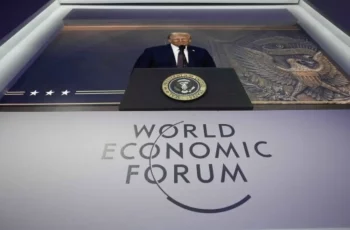
Hours after the U.S. President Donald Trump ordered a direct military strike on Iran’s Fordow nuclear facility, the world stands on the edge of a dangerous precipice. This unprecedented attack, occurring in the early hours of last night, marks a significant escalation in the confrontation between Washington and Tehran, and has once again ignited fears of a broader regional—if not global—conflict.
According to Iranian state media, the American attack targeted the entrance of the Fordow nuclear enrichment site, located tens of meters underground. Despite the dramatic nature of the strike, the damage appears to be minimal. Iranian officials have called the assault a “symbolic operation” with limited strategic impact. The Atomic Energy Organization of Iran is expected to issue a full technical statement, but preliminary reports indicate that key centrifuges had already been removed from the Fordow and Natanz sites prior to the attack. The Iranian government further emphasized that the deep-underground design of these facilities, the result of years of indigenous scientific expertise, had neutralized any attempt to deliver a crippling blow.
This act of aggression is not only a military miscalculation but a profound political one. The U.S. administration, under Trump’s leadership, appears to have lost its strategic bearings. By resorting to force, Washington has exposed its frustration and strategic deadlock. What this attack truly represents is a failure of diplomacy, a betrayal of international norms, and a dangerous gamble rooted in outdated imperial thinking. Trump, increasingly beholden to Israeli Prime Minister Benjamin Netanyahu, has allowed the Zionist regime’s narrow interests to dictate a course that risks global war. The world is now witnessing how the ambitions of a declining empire can drag the international system into chaos.
The media landscape surrounding the strike further reveals a coordinated attempt to shape the narrative. Western outlets, including CNN and Reuters, have underreported or dismissed Iran’s defensive capabilities and the limited damage incurred. In contrast, resistance-aligned media such as Al Mayadeen, Press TV, and Tasnim News have provided footage, satellite analysis, and expert interviews, revealing the superficial nature of the attack. Israeli media, which initially broadcast images from Tel Aviv and Haifa, has since restricted coverage, a move analysts interpret as an attempt to hide the psychological and infrastructural damage inflicted by previous Iranian missile strikes.
More crucially, this moment exposes the deeper ideological battle at play. Washington and Tel Aviv are not merely targeting Iran’s nuclear infrastructure—they are targeting the very notion of Iranian sovereignty, independence, and civilizational identity. For decades, the U.S. has tolerated or ignored nuclear weapons held by regimes like Israel, India, and others. Yet Iran, which has consistently emphasized the peaceful nature of its nuclear program and whose Supreme Leader has issued religious rulings against weapons of mass destruction, remains the subject of relentless pressure and threats.
This double standard reveals the real motive: not nonproliferation, but domination. Iran stands as a civilizational alternative to the liberal hegemony of the West, especially in the post-Cold War era. Its resistance model has inspired popular movements across West Asia and beyond. And today, despite the brutality of sanctions, sabotage, and assassination campaigns, Iran remains defiant—stronger, more resilient, and more unified.
Indeed, one of the unintended consequences of the American-Israeli aggression is the strengthening of Iran’s internal unity. Where once some questioned Iran’s regional alliances, now many recognize their strategic depth. It is clear why Iran built partnerships with Hezbollah, the Popular Mobilization Forces in Iraq, and other resistance groups: to keep the battle outside its borders and to prepare for precisely this moment. Iran has yet to request support from these allies, has not activated its naval forces in the Strait of Hormuz, and has not called on China, Russia, or Pakistan for direct intervention. Yet all these options remain on the table. This calculated restraint underscores Iran’s confidence and its desire to prove that it can confront Israel independently.
However, should the U.S. persist in its aggression, it is likely that Iran’s allies will respond. A wider conflict could pull in China and Russia, both of whom have signaled support for Iran’s right to defend itself. Pakistan has openly declared that it will not stand idly by if Iran is attacked. What we are witnessing may very well be the beginning of a war that accelerates the decline of American unipolarity and ushers in a truly multipolar world.
This is not merely a battle between two states; it is a confrontation between two visions of world order. One rooted in hegemony and coercion. The other, in resistance, dignity, and sovereignty. And tonight, from the heart of Tehran, the voice of that resistance is being heard loud and clear.










Pingback: Clash Of Two World Orders: Fordow Is The Excuse, Sovereignty The Target – Emma Olive